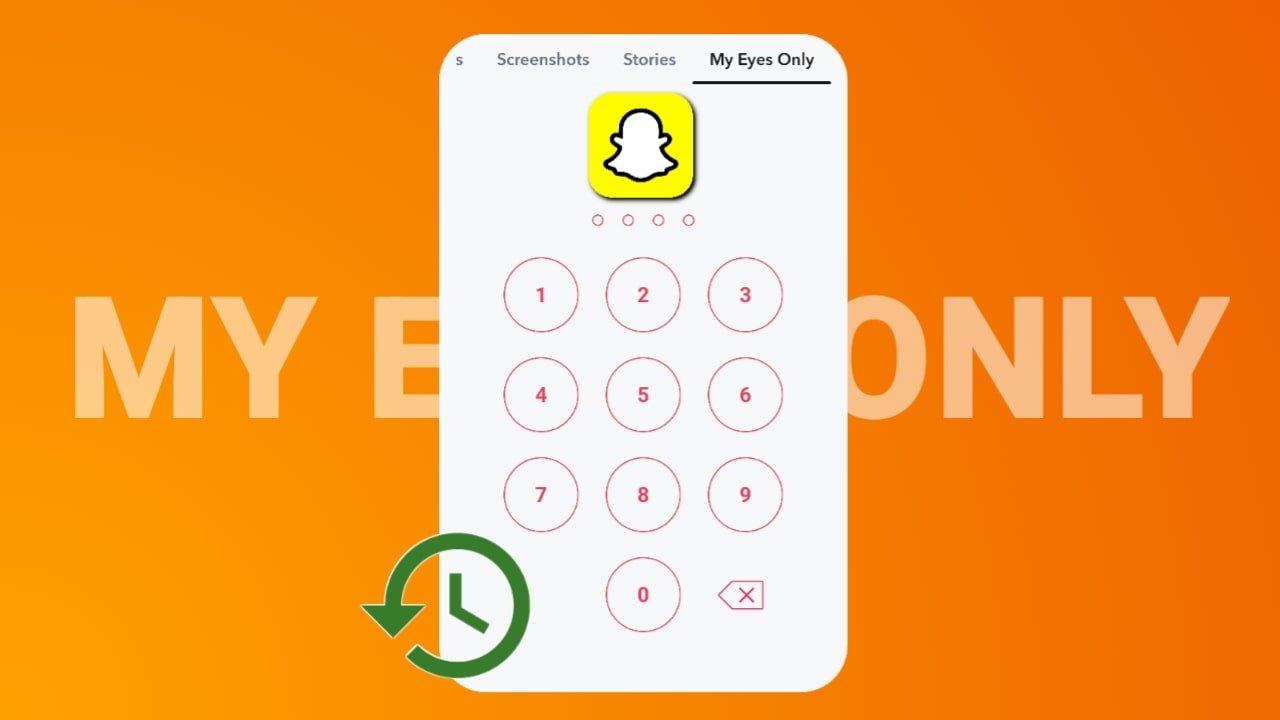Sustainable social strategy aligns content production with environmental goals to reduce digital waste and improve marketing efficiency. By utilizing eco-first workflows, green web design principles, and rigorous measurement, brands can lower their carbon footprint while boosting ROI and deepening audience trust in 2025.
Nearly 60% of B2B marketers say their strategy only works sometimes. That gap in effectiveness matters now more than ever.
The web still holds trillions of outdated posts. That digital bloat raises energy use and drives avoidable emissions. This is a real cost for brands and the planet.
Eco-first content ties what you publish to clear goals, measurement, and simpler workflows. It helps small teams do more with less and builds lasting trust with your audience.
We’ll show practical steps you can use on social media to cut waste and boost results. Expect guidance on planning, publishing, and measuring so every piece earns attention and a positive impact.
Key Takeaways
- Align publishing with goals to make each post work harder.
- Reduce digital waste to lower environmental impact and costs.
- Use simple governance to overcome resource limits.
- Measure the right KPIs to build trust and long-term momentum.
- Optimize delivery and hosting to keep social posts fast and lean.
The 2025 Landscape: Why Sustainable Social Media Content Builds Trust and Impact
Today’s social feeds reward proof over promises. Your audience is more environmentally conscious and expects evidence, not slogans.
Show measurable impact. State what you did, why it matters, and how you measure progress. That builds trust on platforms where skepticism is high.
Keep posts practical. Use short videos, carousels, and stories to teach quick steps people can use now. These formats respect attention and boost saves and shares.
Transparency beats spin. Cite data, link to methods, and invite questions. Treat social as a service channel: answer comments and point people to deeper resources.
- Align posts to measurable goals.
- Prioritize verified proof to avoid greenwashing issues.
- Choose platforms where your audience seeks answers and dialogue.
| Goal | Format | Proof |
|---|---|---|
| Educate | Short video | Data snippet + link to study |
| Inspire action | Carousel | Before/after metrics |
| Support community | Stories & Q&A | Responses and follow-ups |
“Audiences reward clear proof and practical steps more than broad claims.”
Define Audience Intent and Business-Sustainability Alignment

Start by mapping who your audience truly is and what drives their daily choices. Use interviews, surveys, and simple usability tests to see how people search, share, and act. This reveals real problems you can solve.
Use stakeholder research and testing to map real pain points and behaviors
Run lightweight tests and polls to confirm assumptions. Track where consumer behavior shifts across the journey and note which formats build trust fastest.
Reduce bias in personas with systems thinking and inclusive stakeholder mapping
Move beyond demographics. Use systems thinking to include partners, marginalised groups, and service teams. That widens perspective and cuts persona bias.
- Turn research into clarity: list specific problems, expected impact, and KPIs.
- Define KPIs early: signups, purchases, donations, or community actions.
- Close the loop: use social feedback and quarterly reviews to realign goals and keep the strategy audience-first.
“Map intent first; measure outcomes to make a real difference.”
Choose Platforms and Formats That Minimize Footprint and Maximize Reach

Match each distribution channel to a clear role in the buyer journey. Pick platforms where your audience looks for quick how-tos, deep research, or product comparisons. This reduces wasted posts and boosts value.
Host the pieces that require depth—like long guides and downloadable assets—on your blog or website. Use short-form videos and stories for awareness. Link between them to move people from quick tips to full guides.
Prioritize green hosting and tight page-weight budgets
Choose a green web host powered by renewables. Set firm page-weight budgets for pages and posts. Adhering to green web design principles lowers energy use and cuts digital emissions while keeping pages fast on mobile and low-bandwidth networks.
Right-size formats and optimize delivery
Right-size your media. Use short explainer videos, carousels for step-by-step guides, and long-form pillars for evaluation of products and services. Compress images, use efficient codecs, and enable caching to shrink the digital footprint.
- Select platforms based on behavior: shorts and stories for quick how-tos; pillars on your blog for deep research and videos for demos.
- Keep a lean channel mix and syndicate only when it reaches new audiences without extra maintenance.
- Label downloads with file sizes and offer lightweight alternatives to respect data limits.
Track reach and energy together: measure performance and emissions so you can balance growth with reducing waste.
Build Editorial and Visual Standards That Scale Sustainably

Set practical rules so every post serves a measurable role for your audience. Define voice, formality, and plain-language rules that make writing faster and clearer.
Create a concise editorial guide: state tone, inclusive language rules, grammar norms, and accessibility needs. Add checklists for headings, scannability, and links so pieces are easy to read and verify.
Inclusive language, clear voice, and accessibility as non-negotiables
- Use plain language and neutral terms that welcome diverse readers.
- Require alt text, captions, and readable type sizes for all media.
- Train contributors on accessibility basics and measurement.
Visual governance: photo, illustration, and video choices with optimization
- Set image dimensions, color-contrast targets, and compression rules.
- Define when to use photos vs illustrations vs short video.
- Keep page-weight targets and a link policy to manage load and updates.
- Enable dark mode optimization by using transparent backgrounds and appropriate contrast ratios to save energy on OLED screens.
Consistent brand storytelling tied to measurable impact goals
Keep a storytelling framework that links our stories to proof points and KPIs. Review guidelines quarterly so templates, templates for carousels and blogs, and retirement rules stay current.
“Standards help teams scale quality without adding waste.”
Operationalize Content: Workflows, Capacity, and Ethical AI

Defined steps from brief to publish cut rework and save time across teams. Publishing a single post often needs ten or more tasks. Map those tasks so you can plan work, limit wasted efforts, and protect team energy.
Document the pipeline. Start with a clear brief. Add checkpoints for writing, editing, design, QA, accessibility, structured data, and approvals. Use a RACI to show who decides, who drafts, and who reviews.
When to use Gen-AI — and when humans must lead
Define roles for AI early. Let tools draft outlines, summarize reports, or suggest tags. Require human review for accuracy, originality, and legal or privacy risk.
Create an ethical AI policy that covers privacy, training-data concerns, disclosure, and a review standard. For reference, see our recommended ethical AI policy.
Operational checks that save time and energy
- Implement a compressed asset workflow to automatically resize and optimize media before upload.
- Set page-weight budgets and performance gates before publishing.
- Use repeatable templates and checklists to speed content creation.
- Centralize assets and metadata so updates are fast and consistent.
- Track production time per asset to find bottlenecks and boost throughput.
| Stage | Owner | Key Check | Metric |
|---|---|---|---|
| Brief | Product + PM | Goal, audience, SEO brief | Brief approval time (hrs) |
| Draft | Writer | Accessibility + word budget | Draft cycles |
| Review | Editor + Legal | Accuracy, AI provenance | Review time (hrs) |
| Publish | Publisher | Page-weight & structured data | Load time & CTR |
“Map your process, assign clear roles, and audit regularly to keep workflows lean and accountable.”
Sustainability content: Create Stories That Educate Without Greenwashing

Tell real stories that show how people change because of measurable actions. Lead with a person, the problem they faced, and the clear result you measured. This makes your stories believable and useful.
Show your method. Describe what you measured, how you measured it, and any limits. Use consistent units and timeframes so readers can compare claims fairly.
Back claims with data and context
Include emissions or resource context when relevant. Cite third-party verification or link to full reports. That builds trust with cautious audiences.
Avoid greenwashing traps
Watch for vague phrases, unverifiable visuals, and undefined labels like “eco-friendly.” Train your team to spot red flags and to use original photos or cited graphics only.
Practical checklist
- Lead with people and measurable impact.
- Publish methodology, units, and baselines.
- Use verifiable visuals and caption sources.
- Offer a clear example, report link, and next steps for readers.
- Invite third-party review and correct public data changes.
“Honest stories, shown with data and clear methods, teach better and earn lasting trust.”
Distribute Smartly on Social Media and Activate Credible Influencers

Good distribution turns a single post into ongoing dialogue and real change. Use social media as a two-way channel, not just a push tool.
Engage eco-conscious communities with comments, mentions, and reshares
Show up where your community talks. Reply to comments and reshare thoughtful posts to build trust.
Reference user feedback in future pieces so people see their voice reflected. Track saves, shares, and quality comments as signals of real engagement.
Partner with aligned creators for authenticity
Work with creators whose values match yours. Examples include Aditi Mayer for ethical fashion, Max La Manna for food waste, and Leah Thomas for intersectional environmental action.
Evaluate partners by audience fit, engagement quality, and authenticity—not follower counts. Co-create short videos, live Q&As, and carousels that answer real audience questions.
Plan paid, earned, and owned cadence with a realistic calendar
Balance launches with evergreen education. Set a simple paid/earned/owned schedule your team can maintain.
Align talking points and disclosures so partnerships feel natural and compliant. Offer sample products or behind-the-scenes access when relevant, and let creators speak in their own voice.
- Show up: reply, reshare, and cite user posts.
- Co-create: short videos, live Q&A, and platform-native formats.
- Measure: saves, shares, quality comments, traffic, and conversions.
| Channel | Best Format | Primary Signal |
|---|---|---|
| Reels, carousels, stories | Saves & shares | |
| Twitter/X | Threads, polls, replies | Replies & quote-retweets |
| Short videos, articles | Quality comments & clicks |
“Credible creators bridge skepticism and help your brand reach an active, caring audience.”
Measure What Matters: Marketing Outcomes and Environmental Impact

Trackable outcomes make it clear which posts earn attention and which drain time.
Choose KPIs tied to outcomes: clicks, views, signups, purchases, donations, and community growth. These metrics show whether your marketing moves people to act. Align measurement with privacy-first practices and clear consent so data collection is ethical and compliant.
Select KPIs that tie to signups, purchases, donations, and community growth
Pick a short list of outcome metrics. Focus on actions that matter: conversions, repeat engagement, and referral activity. Use dashboards to combine business signals with community indicators for faster decisions.
Estimate digital emissions and improve with continuous performance tuning
Use a digital carbon footprint calculator to estimate emissions based on page weight and visits. This helps you track Scope 3 marketing emissions alongside cost per action. Then cut file sizes, enable caching, and optimize video codecs to lower your footprint and speed pages.
Schedule audits to prune outdated posts and reduce data bloat
Run quarterly reviews to flag underperforming posts for refresh or removal. Keep an audit log that notes wins and failures. Use lightweight experiments to tune speed and accessibility — these practices also help search and engagement.
- Compare campaigns by impact and efficiency: cost per action and emissions per visit.
- Set privacy standards: transparent analytics, informed consent, and minimal retention.
- Share learnings: use results to adjust publishing rhythm so teams invest in what works.
“Measure outcomes, not just activity; combine business results with environmental indicators to make smarter choices.”
For a deeper look at marketing that reduces overconsumption and improves impact, see our guide on sustainable marketing and overconsumption.
Plan Topics and Clusters That Serve Users and Advance Sustainability Goals

Map topic clusters so each page answers a real question and nudges people to act. Build pillar posts for your core themes and use subtopics to match search intent.
Start with a topic map. Group related topics and define the search intent for each. This makes your blog easier to navigate and helps readers find step-by-step answers.
Map pillar pages and subtopics to search intent and audience needs
Create pillars for major themes. Then add how-tos, FAQs, and short explainers that match informational, navigational, and transactional intent.
Integrate sustainability goals to create shared value and future-proof your work
Tie every cluster to a measurable objective. Use acceptance criteria: proof, sources, and accessibility. That cuts rework and builds trust.
Use examples and how-tos on food waste, slow fashion, and everyday low-impact habits
Offer practical how-tos on food waste reduction, slow fashion swaps, and simple daily habits. Include product explainers only when lifecycle benefits are shown.
- Structure: pillar post → subtopic guides → checklists and short answers.
- Refresh: update clusters quarterly with new data and FAQs from comments.
- Links: add internal links to guide readers from intro pieces to advanced resources.
| Cluster Theme | Pillar Post | Supporting Subtopics |
|---|---|---|
| Food waste | Guide: Cut Kitchen Waste in 30 Days | Meal planning, storage tips, composting how-to |
| Slow fashion | Guide: Buy Less, Choose Better | Repair guides, upcycling examples, verified product reviews |
| Low-impact habits | Guide: Simple Daily Changes | Transport swaps, energy-saving routines, mindful purchases |
“Focus topics on real user needs, link proof to practical steps, and refresh regularly to stay relevant.”
Conclusion
Small, steady improvements add up and set your brand on a practical path forward. Make governance, measurement, and pruning regular habits so your teams save time and energy.
You now have a clear way to plan, create, and measure content that supports your sustainability goals and audience needs. Treat old posts as assets: refresh what works and retire what doesn’t to cut waste and improve the experience.
Keep efforts steady each quarter—faster pages, lighter assets, sharper stories—and invest in community and credible partners to extend reach and trust. These steps make a real difference and help guide you toward a sustainable future.
FAQ
Why does eco-first content perform better on social media in 2025?
Audiences now expect brands to show purpose and measurable impact. Eco-first posts build trust by pairing practical tips with verified data, which increases shares, saves, and conversion rates. Clear storytelling that highlights real people and outcomes resonates more than vague claims.
How do I align my business goals with green messaging without greenwashing?
Start by mapping audience intent and stakeholder needs. Use verified metrics, cite methodologies, and show transparent progress. Avoid vague language, unsupported visuals, and sweeping promises. Focus on small, credible wins tied to business outcomes like signups or donations.
Which platforms and formats reduce environmental-impact while maximizing reach?
Choose formats that match the journey: short video for awareness, carousels for education, and long-form pillars for conversion. Prioritize green hosting, optimize page weight, and use efficient delivery to cut emissions. Right-sizing media—compressing files and limiting autoplay—keeps reach high and footprint low.
What editorial and visual standards should I set to scale responsibly?
Define accessible language, inclusive imagery, and consistent brand voice. Create visual governance rules for photos, illustrations, and video optimization. Tie storytelling to measurable impact goals so every asset supports credibility and reuse across channels.
How can small teams operationalize ethical AI and content workflows?
Document end-to-end processes: briefs, approvals, metadata, and recycling rules. Establish clear criteria for Gen-AI use—privacy checks, citation requirements, and human review. Plan capacity with content calendars that limit churn and reduce redundant production.
What makes an educational story effective without sounding like greenwashing?
Center stories on lived expertise and verifiable impact. Use data, emissions context, and transparent methods. Highlight real people and practical actions, and avoid exaggerated visuals or unverifiable claims that trigger skepticism.
How do I find and work with credible creators and communities?
Partner with creators who share demonstrated values and audience alignment. Engage communities—respond to comments, reshare user posts, and co-create resources. Plan a mix of paid, earned, and owned outreach on a realistic cadence to maintain authenticity.
Which KPIs should I track to measure both marketing and environmental outcomes?
Track action-based KPIs like signups, purchases, donations, and community growth. Pair those with sustainability metrics: estimated digital emissions, content lifecycle emissions, and impact audits. Use these combined measures to guide optimization.
How often should we audit content to reduce data bloat and emissions?
Schedule audits at least biannually. Prune outdated pages, compress large media, and remove redundant posts. Regular audits free storage, improve performance, and lower ongoing emissions while keeping your messaging current.
What topic clusters drive long-term search value and user utility?
Build pillar pages around core themes—like reducing food waste, slow fashion, and low-impact habits—and link to tactical how-tos and case studies. Map clusters to search intent, integrate measurable goals, and provide practical guides that help users act.



